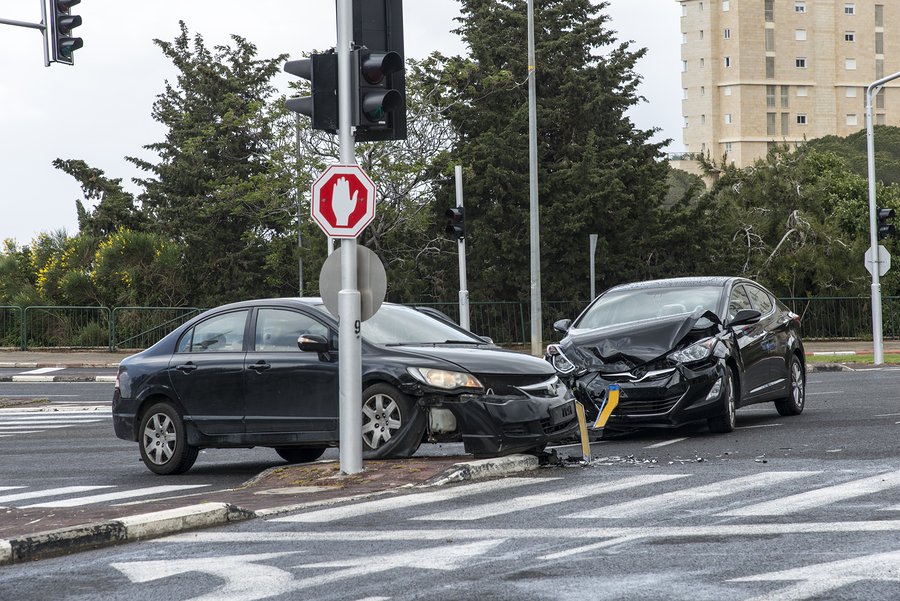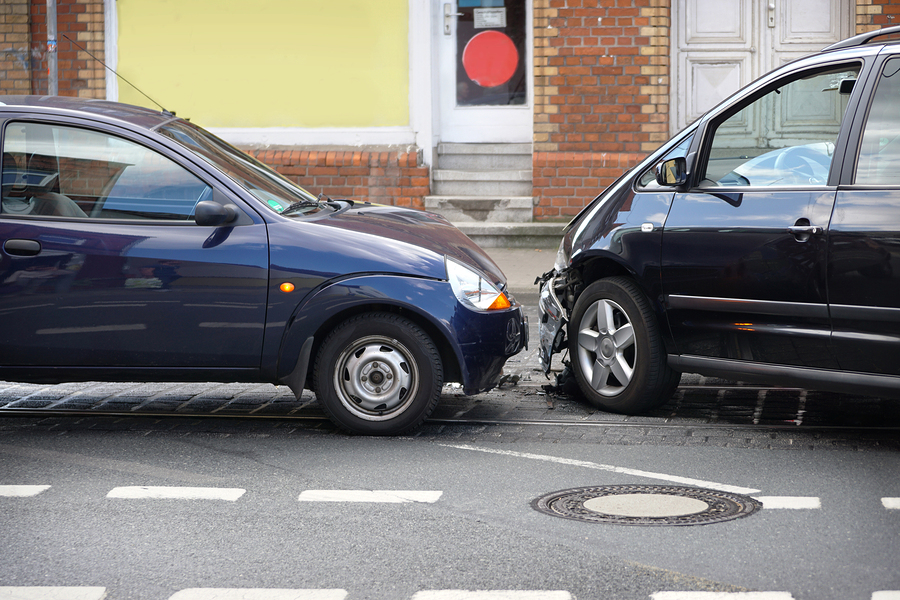Car accidents are jarring, harrowing experiences. Recovering physically, mentally, and emotionally from any car accident takes a long time, and some wounds may never heal. Among the most traumatic and devastating car accidents are those referred to as T-bone accidents.
A T-bone accident occurs when the front of one vehicle strikes, head-on, the side of another vehicle, thus making a T pattern between the vehicles. While passengers in the car hit on its side typically experience the worst injuries in these accidents, fault is not as clear. Understanding how T-bone accidents can come about helps to explain why.
Background
T-bone accidents are also known as side-impact or broadside collisions because the front end of one vehicle hits the side of another. These accidents frequently occur in parking lots and intersections when a driver fails to obey a traffic signal, such as a red light. They also happen when a driver fails to yield to another’s right of way.
T-bone accidents are far more likely to cause serious bodily injury, and the driver of the side-struck car is most at-risk. The side of a car offers far less protection than the front of a car. When a car is struck on its side, all that protects the driver is a three-inch piece of metal and perhaps a side airbag. The front of the car contains the engine, the radiator, and all other machinery necessary to operate the vehicle. The driver simply is farther from the impact when someone hits the car at its front instead of the side.
Thus, the driver in the side-impacted car is at risk of such severe injuries as broken bones, contusions, lacerations, or traumatic brain injuries. In fact, T-bone accidents are far likelier than other accident types to result in severe injuries and death. According to the Insurance Institute for Highway Safety, in one year, side-impact crashes accounted for 30 percent of deaths in multiple-vehicle crashes.
T-bone Accidents and Fault
Most T-bone accidents occur at intersections because of a distracted or impaired driver, or a driver who fails to obey a traffic signal. Obviously, the driver committing the infraction will be at fault for the accident. However, the at-fault driver might not be the driver who crashed into the side of another car, but instead the other driver. Furthermore, parties besides the drivers may also be liable. For example, if a driver failed to yield at an intersection because of a defective traffic signal, the government agency responsible for the signal’s maintenance could also be liable.
Of course, attributing fault is critical to determining who can be held accountable for compensating whom. An at-fault driver can be held responsible for the damages suffered by the other parties, even if the at-fault driver suffered damages, too. Whoever caused the accident usually doesn’t pay these expenses out of pocket; rather, their insurance company foots the bill.
Can I File a Lawsuit After a T-bone Accident?
In an at-fault state, you can sue those party’s at-fault for a T-bone accident that caused you injury.
Additionally, you may file a lawsuit against entities besides the at-fault driver. Those other than the other driver who could be liable for a T-bone accident include government agencies, the vehicle manufacturer, the vehicle dealership, and even pedestrians.
Plaintiffs bring most car accident lawsuits under a theory of negligence. To bring a successful negligence claim, the plaintiff must demonstrate that the defendant owed them a duty of care, violated that duty, that violation caused an injury, and that injury is more than nominal. If the plaintiff can prove each of these elements, they can demand compensation from the party in question.
What Are Damages?
If a T-bone accident victim ends up going to trial and wins in court, the court will grant a financial award known as “damages.
Damages principally serve the purpose of compensating the plaintiff for the expenses and impacts they incurred in the accident because of the defendant’s wrongdoing. They intend to make the plaintiff whole again.
We can divide these compensatory damages into two subcategories: monetary and non-monetary damages. Monetary damages address concrete financial injuries such as medical debt and lost wages. We can easily assign these injuries a monetary value and prove them with formal documents like receipts and paystubs.
Non-monetary damages are more challenging to prove. They cover more abstract claims that are difficult to convert into a monetary sum, such as mental trauma or loss of consortium. Generally, to be granted these damages, the plaintiff must provide testimony from an expert witness like a psychiatrist or medical doctor.
Life-changing injuries may result from a serious T-bone accident. You may sustain broken bones and lacerations that require surgery to mend. If you suffered a concussion or traumatic brain injury, your memory and cognitive function may have suffered.
Financial injuries often follow physical ones. If health insurance doesn’t cover your treatment, you could face a mountain of medical debt. You may never pay off this debt if your injuries make it impossible to work. Knowing negligence or wrongdoing caused your injuries can make the recovery all the more difficult. Compensatory damages address these harms and pay for those damages.

A third damages category that goes beyond what’s necessary to compensate the plaintiff is known as punitive damages. Punitive damages, as the name suggests, punish the defendant for their especially egregious behavior. With punitive damages, the court sends a message, to both the defendant and society at large, that it will not tolerate such behavior.
Generally, to warrant punitive damages, the defendant must have engaged in grossly negligent or wanton and reckless behavior. Punitive damages can often amount to a significant sum, but are rare.
Under any state’s law, T-bone accident victims should seek compensation for their injuries, whether through insurance or in court through an award of damages. The best step to take to start your path to just compensation is contacting an experienced Virginia car accident lawyer.
A good car accident lawyer will be more than just a professional in a suit—they will offer candid advice and an empathetic voice in a time of great need. Attorneys can get your claim off the ground, conduct the investigation necessary to prove your case, and take all other steps necessary to recover the compensation you deserve after a T-bone accident.


